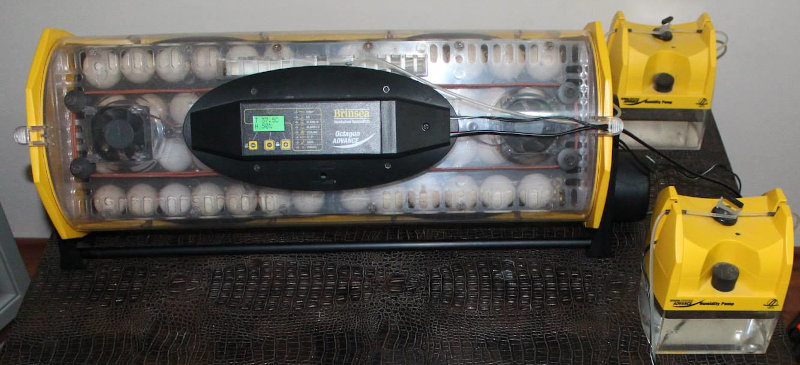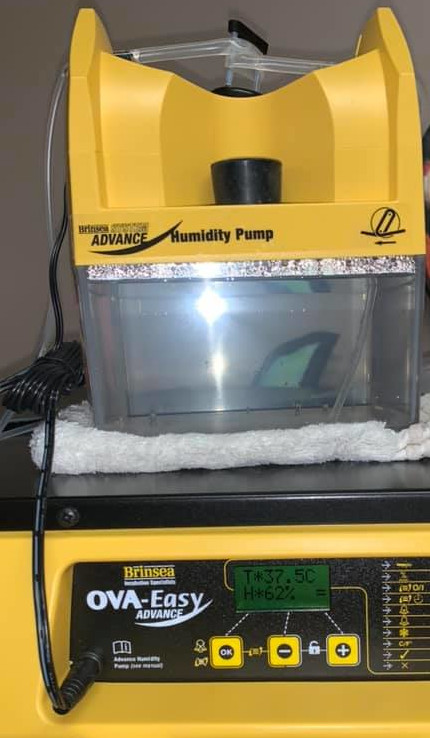Why do incubators need water?

So why do add water to incubators when mother hens don't wet their nests?
The moisture in a nest comes from the environment and the hens skin. Incubation in a nest is a more passive heating process that does not rely on elements and fans so will not dry the eggs out so much.
Incubators mostly come with plastic trays or reservoirs to hold water. These are sometimes divided up so you can vary the volume and the depth of the water in the incubator.
Below: Old style incubators like this one had huge water tanks heated by paraffin burners.

If you are using water in your incubator, you should never let it run dry as the variation in humidity this causes can seriously effect the hatch. An incubator that has contained water allowed to run dry might experience a rise in temperature.
When adding water to the incubator you should ensure it is between 32 and 36 Celsius or between 90 and 95 Fahrenheit. Adding cold water to a large reservoir during an incubation cycle can lower the temperature for many hours.
Water has two functions in the incubator:
- It provides water to humidify the air in the incubator.
- It help moderate the temperature in the incubator.
As the air moves around inside the incubator, water evaporates from the surface in the reservoir and help to raise the humidity inside the incubator. In modern fan assisted incubators this can be quite a rapid process.
Below: An external water tank for an incubator.

Water has a balancing or buffering effect on the temperature in the incubator helping to shield the eggs from rapid changes in temperature as the thermostat switches on and off.
Some incubators come with large external water containers so you can easily see how much is left and when you are going to need to refill.
In the good old days, my grandfathers incubator held nearly two gallons of water and was heated by a paraffin lamp that had to be checked every few hours, even at night. The water was used to spread the heat all across the base of the machine.
Modern incubators hold between 1 pint and 2 litres of water. How fast you get through the water will depend on the humidity of your environment.
Do you always need to have water in the incubator?
You do not always need to add water to incubators. The volume or surface are of water you add depends on the local conditions and humidity. You only need to add water to incubator if the humidity in the incubator drops below 55%.
If the humidity in the incubator is above 65% then you can reduce the surface area to slow evaporation.
There is a whole school of though that says you can incubate dry, after all the hens don't add water to their nests.
Should incubator water be deep or have a large surface area?
Depth of water in the incubator: Depth of water has nothing to do with humidity in the incubator but it does help to moderate the temperature and hold it steady. Deep water reservoirs also make for longer intervals between refilling.
Surface area of water in the incubator: The surface area, or the lack of it, determines the humidity in the incubator during operation. This is accomplished in three different ways in the incubators I use:
- One type has the water container in the bottom divided into 4 sections.
- One of my incubators has three removable slide in trays in the base.
- One uses and external water container and drip feed moisture into the system.
You need both depth of water and surface area in the incubator to maintain a balance.
